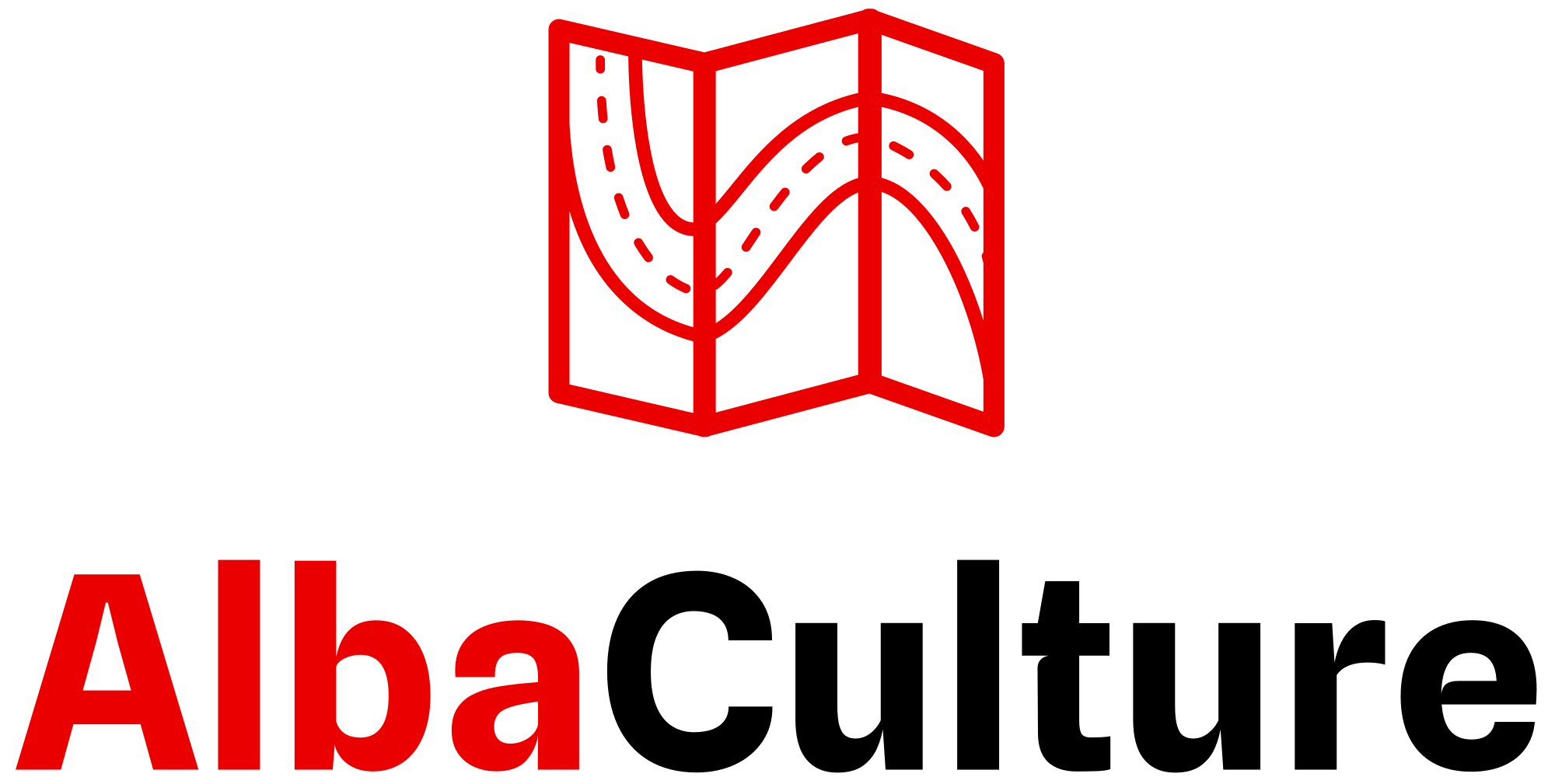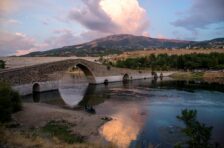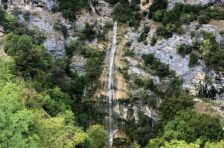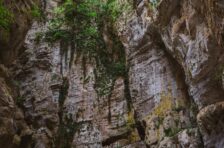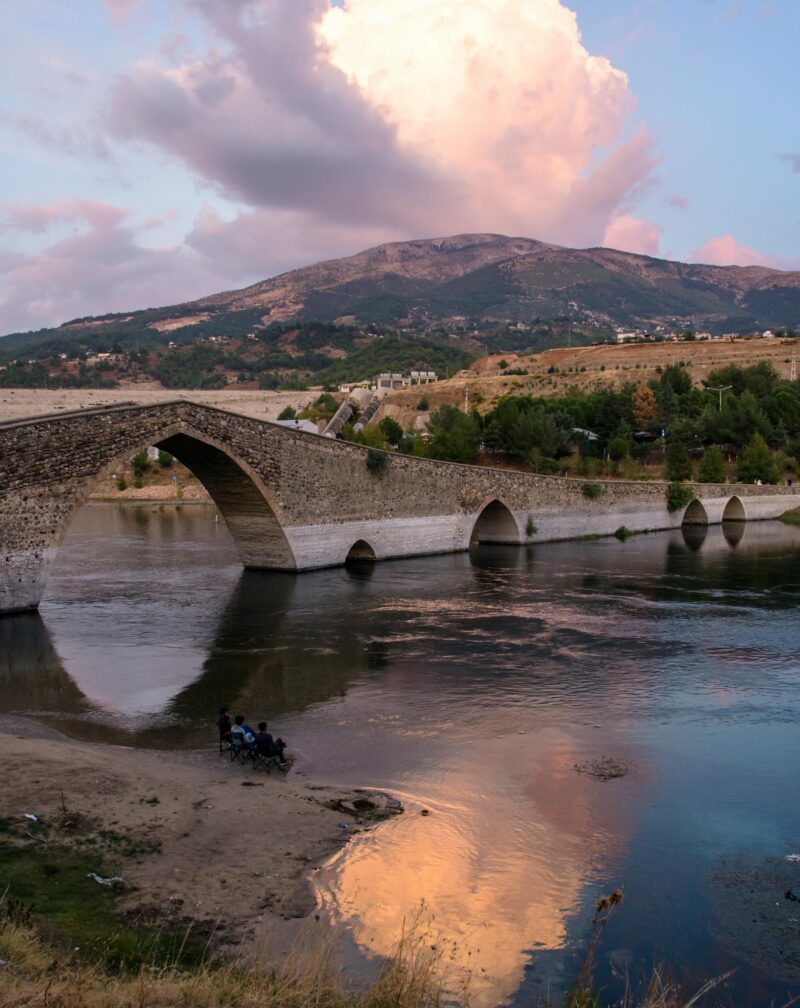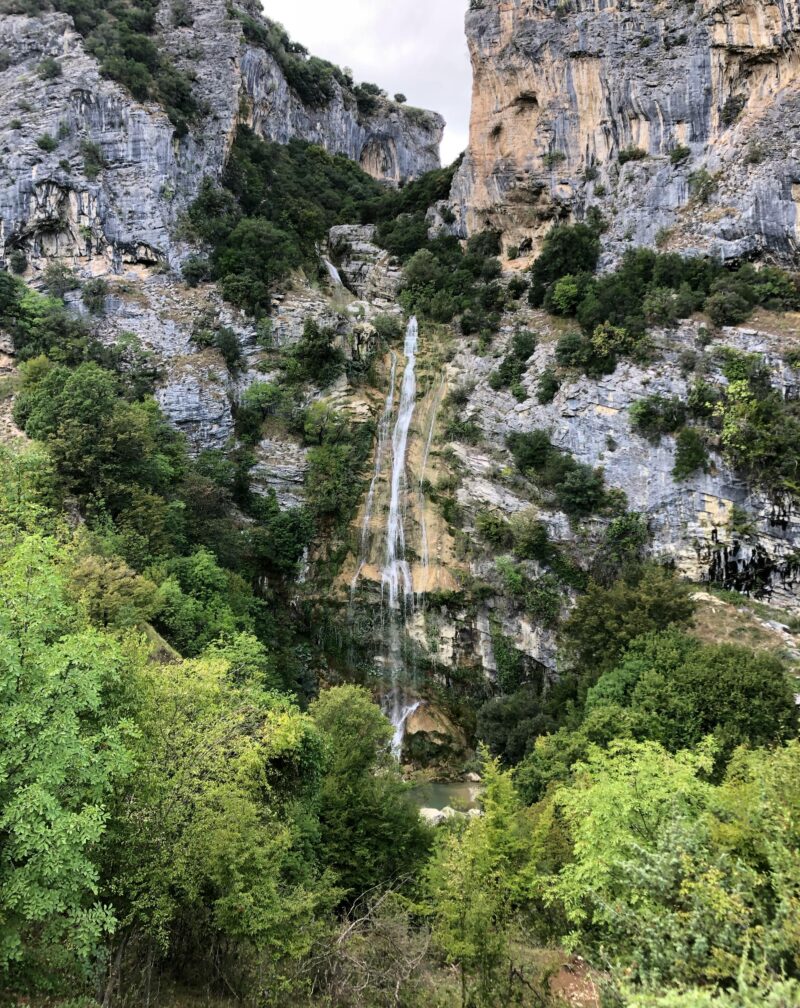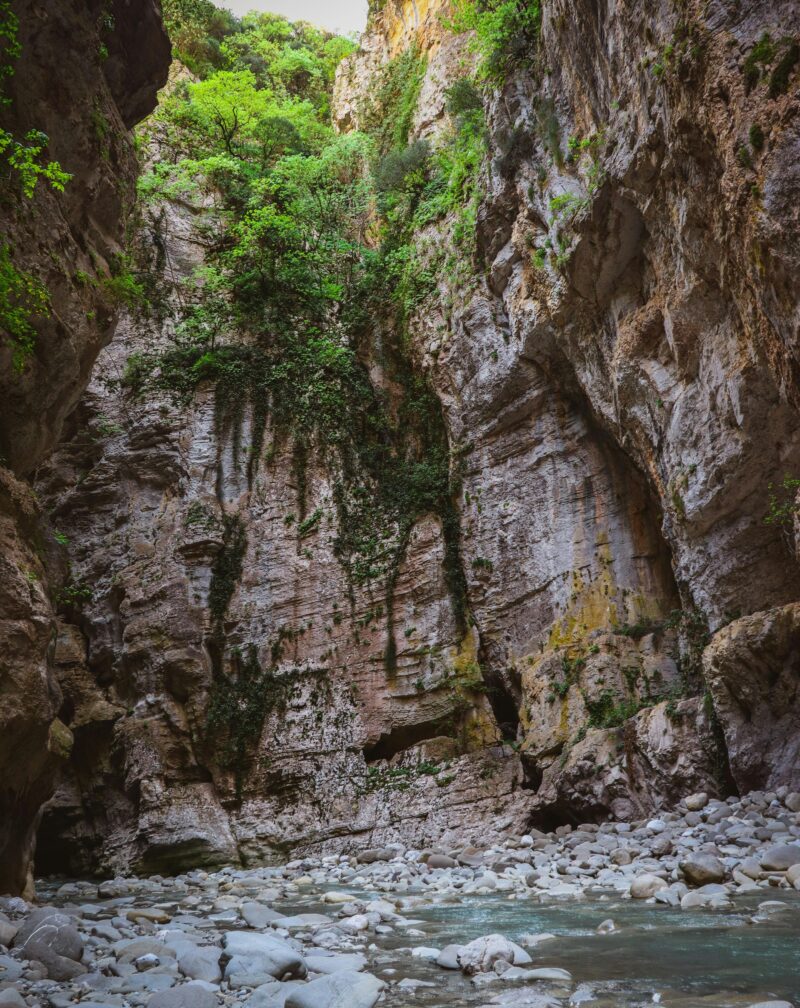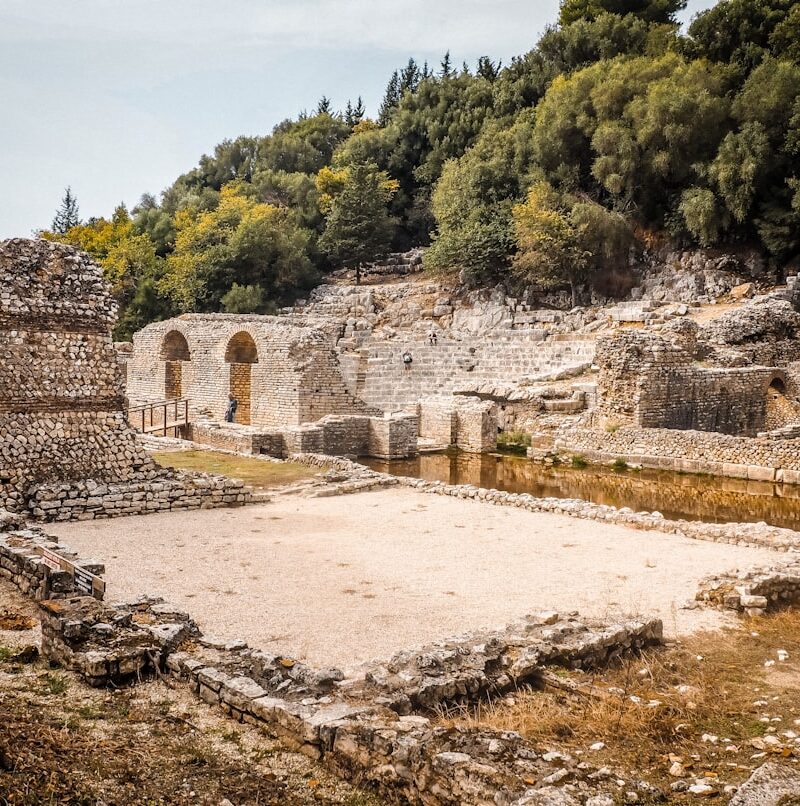The Medieval Citadel
Krujë clings to the mountainside an hour from Tirana, dramatically positioned on cliff overlooking plain stretching to Adriatic. Albanians call it the “Balcony of the Adriatic,” which isn’t exaggeration—views sweep for miles on clear days.
But Krujë’s significance transcends location. This is where Gjergj Kastrioti Skanderbeg resisted Ottoman invasion for 25 years (1443-1468). That resistance is central to Albanian national identity. Skanderbeg is everywhere in Albania, but Krujë is his stronghold, his symbol made physical.
Krujë Castle
The fortress dominates the town, perched on a rock outcrop. Approaching from below, you understand defensive advantage—attackers would face brutal climb under fire from walls.
The castle complex includes multiple elements:
Skanderbeg Museum Main attraction, housed in dramatic building within castle walls designed by Albanian architect Pranvera Hoxha (daughter of dictator, awkward connection but excellent architecture).
The museum chronicles Skanderbeg’s life and resistance:
- His early life as hostage at Ottoman court
- Conversion to Islam (forced) and military training
- Dramatic 1443 abandonment of Ottomans and return to Christianity and Albania
- 25 years of military resistance against vastly larger Ottoman forces
- Complex alliances with Venice, Naples, papacy
- His death in 1468 and Albania’s fall shortly after
Exhibits include:
- Replica of Skanderbeg’s famous helmet (horned helmet with goat-head symbol, now national symbol)
- Weapons and armor from 15th century
- Maps showing battles and territory
- Documents and correspondence
- Paintings depicting battles and key moments
The museum takes Skanderbeg seriously—this isn’t detached historical presentation, its national hero worship, which is itself interesting. Understanding how Albanians view Skanderbeg helps understand Albanian identity.
Entry around 200 lek. English information available. Allow 1-1.5 hours.
Castle Walls and Views Walking the castle walls provides spectacular panoramas—Adriatic in distance on clear days, plain spreading below, Tirana direction visible.
The walls show different construction periods—Illyrian foundations, Byzantine expansions, medieval additions. Archaeological work continues revealing earlier structures.
Small ethnographic museum within castle shows traditional Albanian life—clothing, tools, household items from various regions and periods. It’s modest but adds context to Skanderbeg era life.
Old Bazaar (Pazari i Vjetër)
Krujë’s bazaar is Albania’s most famous, and deservedly—it preserves Ottoman-era market while functioning as active commercial center.
Stone-paved Street lined with traditional shops selling:
Copper and metalwork – Trays, coffee sets, decorative items, all hand-hammered with traditional designs. You can watch coppersmiths working, hammer striking rhythmically, creating patterns.
Wood carvings – Boxes, panels, furniture elements with geometric Albanian patterns. Some pieces are museum quality; others are tourist trinkets—prices reflect difference.
Traditional textiles – Hand-woven rugs, embroidered items, traditional clothing elements. Quality varies significantly.
Filigree jewelry – Delicate silver work, traditional Albanian designs including eagle motifs.
Antiques and curiosities – Communist-era memorabilia, old tools, vintage items. Authenticity varies, but hunting through stalls is part of the fun.
Traditional clothing – Full costumes from different regions, or individual pieces like vests, hats, shoes.
Food products – Honey, raki, olive oil, dried herbs, mountain tea.
Bargaining is expected at craft stalls. Start at 60-70% of the asking price. Vendors enjoy negotiation—it’s social interaction, not combat. You’ll likely settle around 70-80% of initial price.
Best purchases are copper work and wood carvings—these are actually made in Krujë workshops, not imported. Other items might be from China or elsewhere, so ask about origin if authenticity matters.
The bazaar itself is beautiful—traditional architecture, covered sections providing shade, stone underfoot, mountain air, vendors calling greetings. Even if you buy nothing, walking through it is worthwhile.
Dollma Teqe
Bektashi tekke (lodge) sits on a hillside with views over the valley. Bektashi order represents mystical Islam branch, significant in Albanian religious history.
The tekke is small but beautifully positioned. The Baba (spiritual leader) or community members sometimes meet visitors, explaining Bektashi beliefs and practices.
Views from Tekke rival castle—different vantage point, equally impressive.
Entry is usually free, donation appreciated. Dress modestly, remove shoes when entering buildings.
Sari Salltik Tomb
Another Bektashi site, tomb of semi-mythical figure Sari Salltik. The location is a cave/grotto near the castle.
It’s a pilgrimage site for Bektashi believers. For visitors, it’s interesting glimpse into Bektashi veneration of saints and mystical Islamic practices.
Not always easily accessible—ask locally about visiting.
Ethnographic Museum
Separate from the castle’s small ethnographic section, this museum occupies a traditional Ottoman house, showing how wealthy families lived.
Rooms are furnished period-appropriately with traditional items. It’s modest museum but provides context for Ottoman-era Albanian domestic life.
Entry few hundred lek, can usually be combined with castle ticket.
Martyrs’ Cemetery
Cemetery on hillside commemorating those who died fighting Ottomans alongside Skanderbeg. The location is beautiful, views are excellent, and for Albanians it’s pilgrimage site.
Graves are modest, marked with simple stones. The atmosphere is reverent.
Cafes and Restaurants
Several restaurants in and near castle serve traditional Albanian food with spectacular views.
Eating lunch on terrace overlooking valley toward Adriatic while sampling local dishes is pleasant way to spend midday when castle touring gets hot.
Prices are moderate to slightly elevated for tourist location. Quality is generally good.
Qafë Shtamë National Park
Small national park in mountains above Krujë, good for hiking and nature. It’s not heavily developed—trails exist but aren’t always well-marked.
The area offers escape from summer heat, mountain views, and chance to see Albanian mountains without traveling to far north.
Practical Information
Getting There:
- From Tirana: 1 hour by bus (200-300 lek) or furgon
- Frequent departures from Tirana’s north bus station
- By car: easy drive, well-marked roads
- Day trips from Tirana are standard
Timing: Half day covers castle, museum, and bazaar at reasonable pace. Full day allows relaxed exploration, longer bazaar browsing, meal with views.
Most visitors come as day trip from Tirana. Overnighting is unnecessary unless you want quiet evening after day-trippers leave.
When to Visit: Year-round possible. Summer can be hot midday—morning visits are cooler. Spring and autumn ideal. Winter brings mountain air and potential cold but fewer crowds.
Crowds: Krujë gets busy, especially summer weekends when Tirana residents visit alongside tourists. Weekday mornings are quieter.
Combining Visits: Krujë pairs well with Durrës (40 minutes away) for full-day trip from Tirana hitting historical and beach/archaeological sites.
The Krujë Significance
For Albanians, Krujë is pilgrimage site—place where Albania’s greatest hero held off foreign conquest, preserving Albanian identity when it could have been erased.
Skanderbeg’s resistance failed ultimately—after his death, Albania fell to Ottomans for 400+ years. But those 25 years of resistance became a foundation myth. They proved Albanians could fight, could organize, could resist overwhelming power.
This matters for understanding Albanian psychology. Small nation surrounded by larger powers, repeatedly conquered, somehow surviving. Skanderbeg embodies that survival instinct and resistance spirit.
For visitors, Krujë offers:
- Dramatic mountain setting and views
- Best traditional shopping in Albania
- Important historical site with museum
- Authentic Ottoman bazaar still functioning
- Easy access from Tirana
- Genuine Albanian cultural experience
It’s not undiscovered—every guidebook mentions it, tour groups visit, it’s well-established on tourism circuit. But it handles tourism relatively well, maintaining character while accommodating visitors.
The bazaar is possibly Albania’s single best shopping opportunity for authentic crafts. If you want handmade Albanian items—copper work, wood carvings, traditional textiles—this is the place. Prices are higher than random shops elsewhere but quality is visible and craftsmanship is real.
Don’t rush Krujë. Give it time to reveal itself. The views, the mountain air, the rhythmic hammering of coppersmiths, the stories embedded in stone—they deserve attention.



